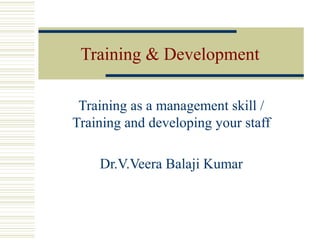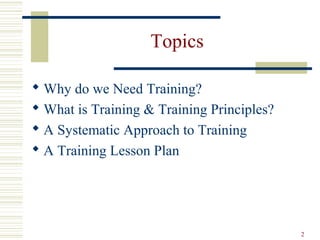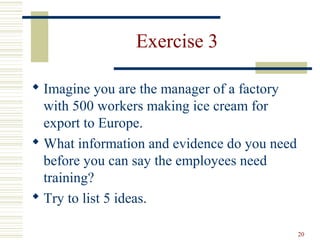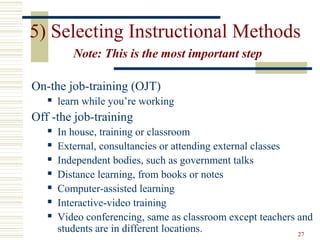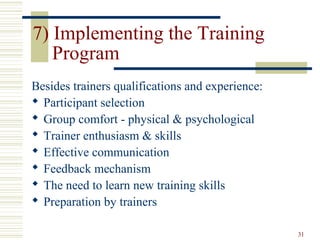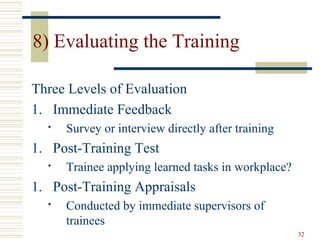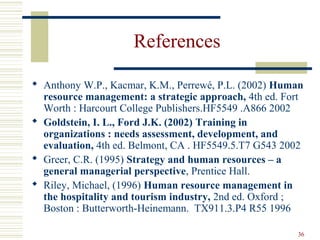The document discusses training and development in organizations. It begins by outlining the objectives of understanding why training is important, defining the ASK concept of developing attitudes, skills and knowledge, explaining the training process, and developing training lesson plans. It then covers various topics related to training including assessing training needs, the differences between training, education and development, principles of learning, and a systematic 9-step approach to training involving assessment, planning, implementation and evaluation. Specific methods and examples are provided to illustrate how to analyze training needs, develop training plans and programs, choose instructional methods, and evaluate training outcomes.
